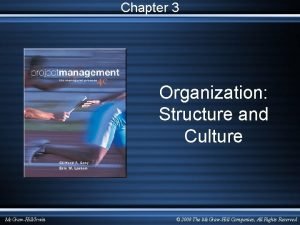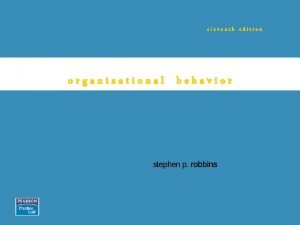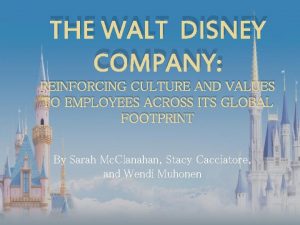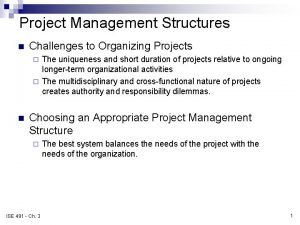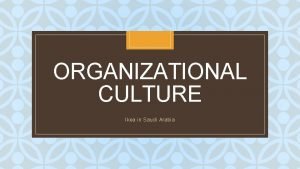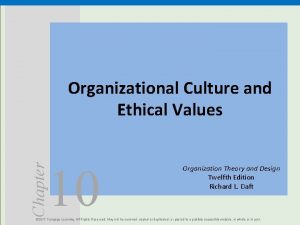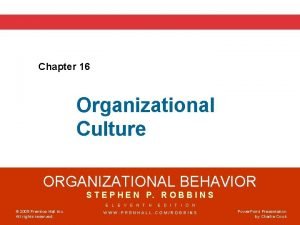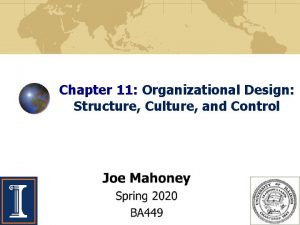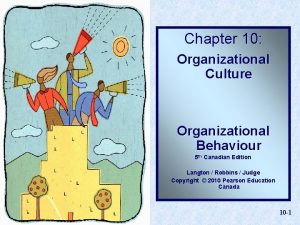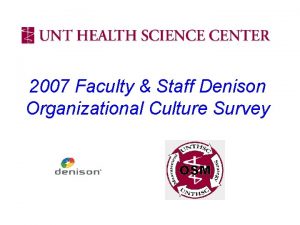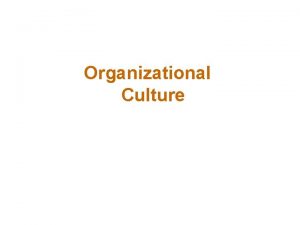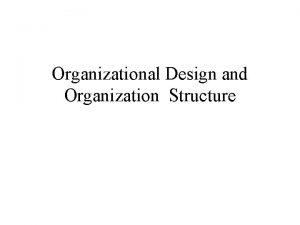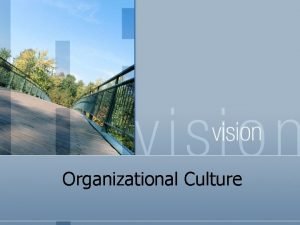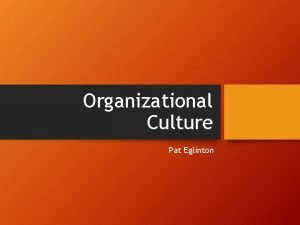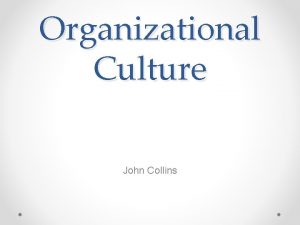Organizational Culture Fall 2005 Organizational Culture 1 Organization













- Slides: 13

Organizational Culture Fall 2005 Organizational Culture 1

Organization Culture • • • Fall 2005 Defining culture Does it matter? Describing culture Acquiring culture Changing culture Organizational Culture 2

Defining Culture • What is it? • “. . . the shared patterns of thought, belief, feelings, and values that result from shared experience and common learning” • “system of shared meaning” • “The social glue that holds the organization together” • Characteristics: • • • Fall 2005 Holistic Historically determined Socially constructed (perceptions) Soft Difficult to change Organizational Culture 3

Does It Matter? • Enhances group members’ ability to adapt and survive • Reduces uncertainty about what to do and how to do it (and thus, reduces anxiety) • Provides sense of mission • Strong or widely-held culture may lead to high performance (jury’s out on this one) Fall 2005 Organizational Culture 4

Single or Multiple Cultures ? • Multiple cultures may be a sign of conflict • Mergers • Top-down attempts to “manage” culture • Subcultures (core culture + adaptations) Fall 2005 Organizational Culture 5

What is Included? • • • Common language and conceptual categories Group boundaries and criteria for inclusion and exclusion Power and status Intimacy, friendship, and love Rewards and punishments: what is rewarded and punished, as well as what rewards and punishments are • Ideology and “religion”: that is, how to manage the unmanageable and explain the unexplainable Fall 2005 Organizational Culture 6

Recognizing Culture • Events: • Things • Rites and Ceremonies • Rituals • Communications • Myths • Stories Fall 2005 Organizational Culture • • • Symbols Language Gestures Physical setting Artifacts 7

Layers of Culture Symbols Rituals Heroes Values Fall 2005 Organizational Culture Practices 8

Cultural Dimensions (Hofstede) • • • Fall 2005 Process vs. results Employee vs. job Parochial vs. professional Open vs. closed Loose vs. tight Normative vs. pragmatic Organizational Culture 9

A Second Set of Cultural Dimensions • • Fall 2005 Innovation and risk-taking Attention to detail Outcome orientation People orientation Team orientation Aggressiveness Stability Organizational Culture 10

Sources of Culture • • Fall 2005 Founders Historical events Industry National culture Organizational Culture 11

Photo from: http: //www. culture. gouv. fr/culture/arcnat/lascaux/en/index. html Acquiring Culture • Selection process • Socialization of new members • Rites and ceremonies • Initiation • Passage • Celebration Fall 2005 Organizational Culture 12

Changing Culture • Can it be changed? • In a new organization: The founder effect • Maybe yes? • Maybe no? • Should it be changed? • Strong culture can be a barrier to innovation, growth and change Fall 2005 Organizational Culture 13
 Process organization in computer organization
Process organization in computer organization Block arrangement essay
Block arrangement essay Seven elements of culture
Seven elements of culture Organizational culture diagnosis worksheet
Organizational culture diagnosis worksheet Customer responsive organization
Customer responsive organization Corporate culture disney
Corporate culture disney Organizational culture diagnosis worksheet
Organizational culture diagnosis worksheet Corporate culture ikea
Corporate culture ikea In an inert organizational culture,
In an inert organizational culture, Aspects of organizational culture
Aspects of organizational culture Customer responsive culture
Customer responsive culture Organizational design: structure, culture, and control
Organizational design: structure, culture, and control Characteristics of organizational culture
Characteristics of organizational culture Denison culture survey
Denison culture survey



